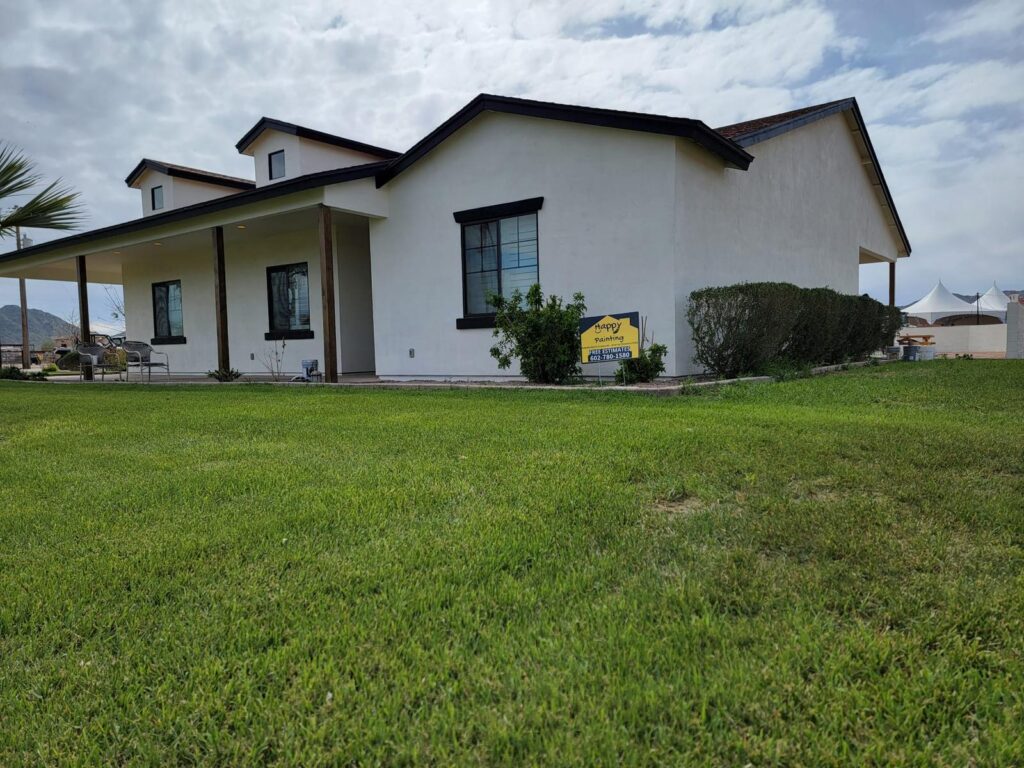Tips on Getting HOA Approval on Exterior Paint Colors for Arizona Homes
Tips on Getting HOA Approval on Exterior Paint Colors for Arizona Homes Understanding the nuances of your HOA’s guidelines and finding ways to align your preferences with their regulations can be the key to unlocking a harmonious color palette for your Arizona home. So, how can you ensure your desired paint colors grace your home’s exterior without a hitch? Key Takeaways Research the HOA Rules Get HOA Approval Check for Scheduling Restrictions Search for HOA Approved Paint Colors How To Get Your Colors Approved By Your HOA Quickly Can the HOA Force me to pay a fine for the color of my house? These steps are very important to make sure the colors and finishes you select meet the standards of your community. First, look at HOA’s exact rules about exterior paint colors because they might have a pre-approved palette for you to choose from. Also, be careful with any limitations on color schemes; some HOAs may restrict how many types of colors can be used or ask for certain combinations. By comprehending these instructions, you can dodge expensive errors and guarantee a successful endorsement. HOA painting guidelines, besides colors, might also encompass finishes, sheens and application methods. Follow any rules about the kind of paint finish allowed on your house’s outside surfaces. There could be a requirement for certain sheens to keep a consistent look in some HOAs. If you follow these rules, you can make your home look good and also satisfy the requirements of HOA. Research the HOA Rules To make sure your exterior paint colors are in line with the standards set by your Arizona HOA, it is necessary to do thorough research on the rules and regulations of this association. You can begin this process by getting a copy of HOA’s guidelines related to exterior paint colors. These guidelines usually provide information about allowed color combinations, certain limitations on color selection, and how you should submit your chosen colors for official acceptance. Be cautious of limitations on daring or unusual colors, as certain HOAs in Arizona might have stringent rules to support a consistent neighborhood look. Moreover, search for any necessities relating to historical areas or particular architectural styles that may possess assigned color schemes. Note down procedures for proposing paint colors, such as required documents or forms needed when submitting them for review. Knowing the HOA’s rules will assist you in selecting exterior paint colors that are probably to be approved. This can save your time and possible repainting expenses. Doing your homework beforehand can help guarantee a more hassle-free approval procedure for the outdoor paint shades you desire. Reviewing the HOA’s Governing Documents When selecting the exterior paint colors for your Arizona residence, it is very important to first study the governing documents of HOA. You should know about the allowed color range and consult with them for any limits clarification. Also, communicate with HOA board or architectural group to get advice. Ask for written guidelines so that you can confirm if your paint selection follows HOA’s rules correctly. Understanding the Approved Color Palette By examining the HOA’s governing papers, you will get a direct comprehension of what colors are suitable for outside painting in Arizona houses. Usually, these papers give detailed rules about color patterns, tones and final touches allowed on the outer side of properties that are part of this community. If you know well these guidelines, it’s likely your suggested paint colors will comply with HOA regulations which can help for quick acceptance. Be vigilant about any limitations on using bright or unusual colors, and the necessity to obtain consent before making modifications. Familiarity with the authorized color spectrum will assist you in smoothly handling the endorsement process as well as maintaining a consistent and visually appealing neighborhood look. Consulting with the HOA for Clarification Once you have studied the colors that are approved in the HOA’s governing documents, contact the HOA to confirm certain choices for exterior paint on Arizona homes. Carefully go through these rules and highlight any limitations on shades, finishes or ways of application. Connect with them by sending an email or making a phone call to ask about things you are not sure about. Get ready to give more specifics like color swatches, samples of paint or digital designs for better imagining. Inquire about the time it takes for the approval process and any forms or documents needed to submit. Good communication with the HOA will aid in a less complicated approval procedure for your wanted outside paint colors. Contact the HOA Board or Architectural Committee Make sure to carefully read the HOA’s governing documents before contacting the HOA Board or Architectural Committee about exterior paint colors for your home in Arizona. The governing documents contain detailed guidelines that need to be adhered to by homeowners when they want to modify their home’s exterior, such as choosing new paint colors. You should look for sections in these papers which discuss alterations on exteriors, architectural instructions, or any rules concerning house aesthetic aspects. When you communicate with the HOA Board or Architectural Committee about what colors are acceptable for painting a house’s outside in Arizona, you should mention that you have looked at and understood the organization’s controlling papers. Keep in mind the swatch of color and maybe some restrictions on certain color families. It is good to know these guidelines before so you can make your proposal match with what HOA expects, and this will raise chances for getting approval to use wanted exterior paint colors. Don’t forget, clear communication and following the rules set by HOA are very important for a successful approval process. Request Written Guidelines If you want to ask the HOA Board or Architectural Committee about exterior paint colors for your home in Arizona, first make sure you are very familiar with the HOA’s governing documents. You can request a copy of these rules and regulations from your management company. Pay special attention to sections that discuss home exterior


